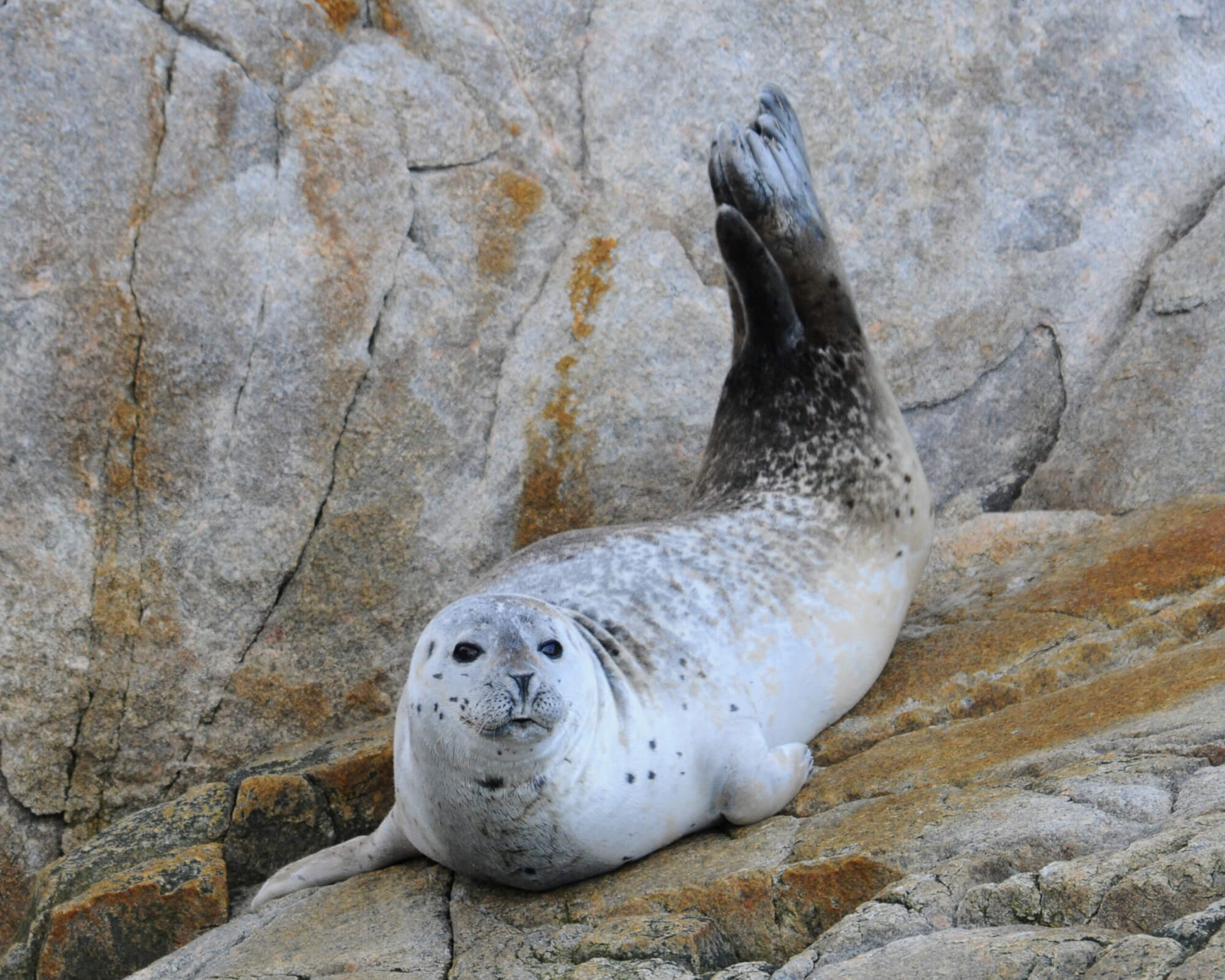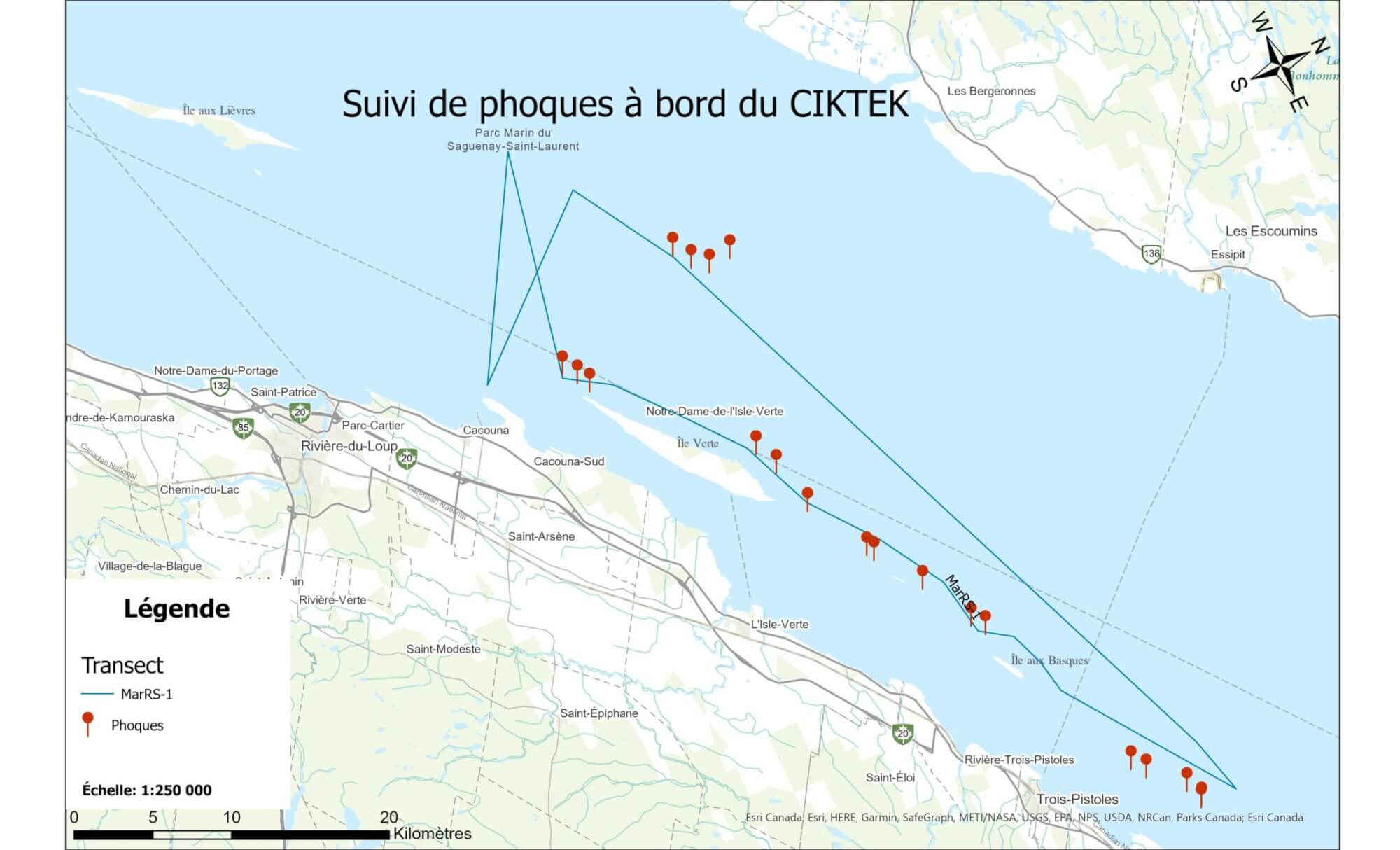Today, June 21, 2023, is National Indigenous Peoples Day. I want to emphasize this, since I will be sailing on the unceded territory of the Wolastoqiyik, Mi’kmaq and Innu peoples, who acquired valuable knowledge here long before us. I feel privileged to participate in a seal monitoring mission aboard the Ciktek, a new vessel operated by the Wolastoqiyik Wahsipekuk First Nation. Originally designed for lobster fishing, this boat has become a scientific platform, amongst other things, for a seal monitoring project in the Upper and Lower estuaries. This summer, the crew will make five different trips with the aim of assessing the feasibility of monitoring the abundance and distribution of harbour seals and grey seals in the estuary.
By Corinne Trubiano, Resource Management Technician at the Saguenay-St. Lawrence Marine Park
We arrive at the port of Gros-Cacouna in the early morning. The marina is frequented by many international ships, so they check my ID. I meet with the Ciktek crew and then hop aboard their truck. The departure is a two-stage process. First, we load all our equipment into a small motorboat and head to the Ciktek, which is anchored a little farther out in the bay. Then we hoist all the equipment onto the deck and it’s time to set sail!
Today’s course will take us from Cacouna toward the Lower Estuary. The objective is to skirt some of the islands in the area, which are renowned for their wildlife diversity and which are prime haulout sites for seals. Seals congregate, rest and moult here.
First destination: Île Verte. Armed with notepads, binoculars, GPS and cameras, the entire crew is ready to go. We start at the western tip of the island and follow the northern shoreline. Already, we can see about fifteen seals on the beach! They are all harbour seals. The day’s off to a promising start! My one colleague and I observe the seals through our binoculars, while another member of the team somehow manages to photograph them. You need sharp eyes to pick out these greyish mammals amidst the rocks. Collaboration between crew members greatly increases monitoring efficiency! When approaching a potential haulout site, the captain of the Ciktek is careful to maintain a distance that allows the seals to be tallied without disturbing them.
In harbour seals, colour patterns are extremely variable, with their dorsal surface ranging from light grey to brown and sometimes even red. The photos we’ve taken will help us validate our species identification later. The movement of the boat and the distance from shore complicate our observations. Also, unlike other seal species, harbour seals do not congregate during the pupping season, which runs from late spring to early summer. Further, grey seals sometimes mingle amongst the harbour seals, which adds another layer of complexity. We must therefore stay alert and validate our observations with photos when entering our data.
When we get to the eastern tip of Île Verte, we once again observe about twenty seals resting in the sun. Although we’re nearing the end of the whelping season, we are lucky enough to see a pup with its mother. Heading east, we pass by Île aux Pommes, where we observe about 30 seals both on the beach and in the water. We arrive at our most easterly point, Les Razades, two tiny islands that, like Île aux Basques, represent genuine refuges for a wide array of birdlife.
The diversity of islands in this portion of the Lower Estuary is most impressive! With a little help from the current, we head toward Île Rouge. On the way, we think we spot some seals in the distance on a rocky outcrop. We deviate from our course to go take a look. False alarm! It was just a pile of rocks. We return to the helm and head toward Île Rouge. This time, our eyes aren’t playing tricks on us, for we do indeed observe about 20 seals, the last ones of the day.
Thanks in part to the splendid sun and mild temperatures, we return to the docks more than satisfied. In the four hours it took us to complete our loop, we observed 172 seals, a record for our team! We return to the port of Gros-Cacouna enraptured by our great river and the powerful character of the land and water around us. As usual, we’re all a little red in the face by the time we get back, as the seals often make us forget to put on our sunscreen!
By Corinne Trubiano, Resource Management Technician at the Saguenay-St. Lawrence Marine Park









